NOTHING IS SAFE
The tragic death of Marco Simoncelli is a stark reminder that there is no such thing as "safe." For all the progress that has been made in making circuits, equipment, helmets etc. "safer" it cannot prevent the sort of event we witnessed on our screens on Sunday morning.
Comparisons have been drawn with the accident which killed British racing driver Dan Wheldon on an oval track in the US the week before. There are no similarities. In that case you had nearly 35 cars travelling at more than 200mph on a one and a half mile track and it was an accident, a fatal one, looking for somewhere to happen.
But there are some things we can look at in motorcycle racing. Where there are large grids it may be advisable to allow a lot more space between the bikes, that first corner is always the most dangerous. And the blue overtaking flags are, perhaps not used or, more importantly, not taken notice of, enough.
It is a fine balance between providing entertainment, thrills and spills, while ensuring our dangerous sport is as "safe" as you can make it.
One thing is for certain. The charismatic Marco will be much missed in MotoGP. His very appearance set him apart and his aggressive style of riding, while not endearing him to some of his fellow competitors, made him the darling of the fans.
Who now will succeed Rossi?
BUMBLE PIE
It must have been the most difficult choice. The mighty BMW have at last had to admit that outside help is required to make their bikes competitive. Their own electronic management system has been binned and they will, next season, be using Marelli - along with the rest of the common herd.
For Bayerische MotorWerken it is the ultimate humiliation. But after two years of serious under-performance despite the best efforts of Troy Corser and Leon Haslam they have been forced to hold up their hands.
For the more mature reader, which includes this scribe, whose knowledge of motorbike electronics is confined to a magneto and, maybe, points it has to be emphasised that modern racing machines are all about electronics which is why you see mechanics (sorry engineers) lugging laptops around. And you require very clever people to operate them.
The electronic control unit (ECU) does what it says. It monitors everything and when, following practice, a rider comes into his pit he cannot lie. The engineer looks at his laptop and knows more about cornering speeds etc. than the rider. Scary.
For BMW, whose cars and bikes are computers on wheels, to admit they can't get it right is a big climbdown. But they are not alone. The Ten Kate Honda team use Cosworth.
FLY BY WHAT?
One of the many big talking points in the WSB paddock at Portimao was the startling improvement in performance of Jonathan Rea and the Ten Kate Honda. All due, apparently, to "fly-by-wire" throttle control. Now what the hell is that!?
Well, it's electronics, of course and despite the name employs fewer wires rather than more. It makes the bike easier to control by transferring some of the things riders do to the electronics box. One of which, I am told, is the need to blip the throttle when changing down. So you can get into corners quicker.
Not all teams have this piece of electronics trickery and there was much muttering that Honda should have been allowed. Indeed, it does reintroduce the whole question of how much expensive gadgetry should be permitted, particularly with a production-based series like World Superbikes.
Whatever your view, economics will prevail. If the various series are going to survive then the cost of racing has to come down in order to allow the number of competitive bikes on the grid to go up; to reduce the costs to spectators; to make it possible for circuits to afford to run the races.
Indulgencies like the above, qualifying tyres, traction control, launch control and all other devices which de-skill the art of the likes of Valentino Rossi and don't bring a single spectator through the gate have to go.
The new owners of World Superbikes and, as they also happen to own - for the time being at least - MotoGP, are in control of all this. Let's see what they do.
A GOOD PARTY
Although the series ended with a whimper - Checa having been crowned champion some time before - the World Superbikes after-race party was a grand affair, no expense spared here. Guests were advised that dress was "formal" and indeed championship winners Carlos Checa and Chaz Davies were suitably suited and booted as they strode onto the stage to receive their awards.
Others had obviously not heard the line "dress to impress" although attention was certainly grabbed by Marco Melandri and his statuesque girl friend. The diminutive Italian was sporting a large white flat cap, which presumably has some technically descriptive term (yes, chav - DM), while his lovely lady towered above him wearing what she is good at wearing, amply justifying her popularity with tv cameramen in the pits. In fact, we usually saw more of her than Marco!


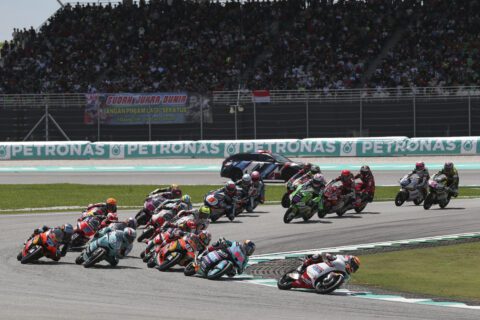
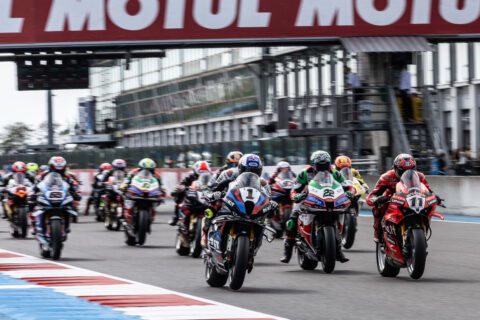
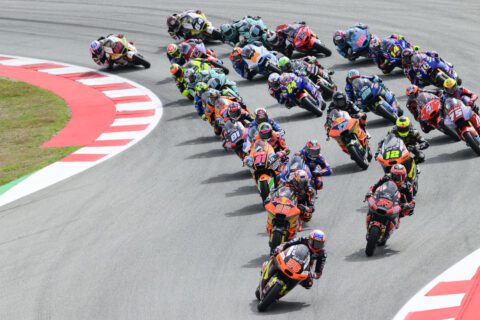
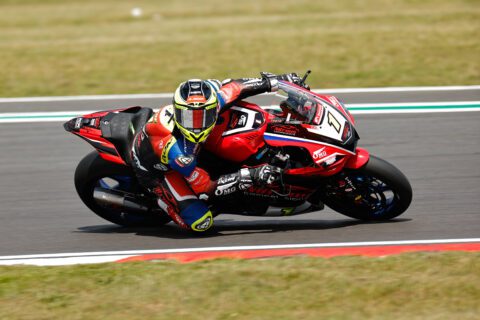
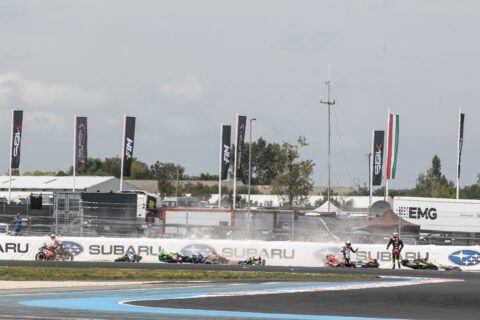
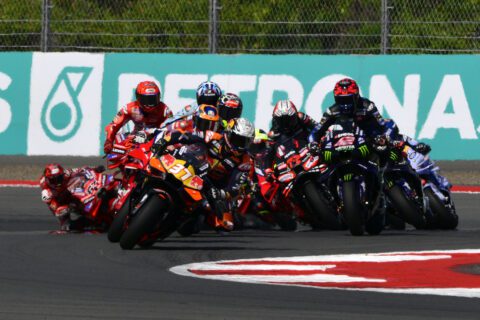
![Shane Byrne, Monstermob Ducati, 2003 WorldSBK, action [Gold & Goose]](https://bikesportnews.com/wp-content/uploads/2025/07/Shane-Byrne-Monstermob-Ducati-2003-WorldSBK-action-Gold-Goose-480x272.jpg)

